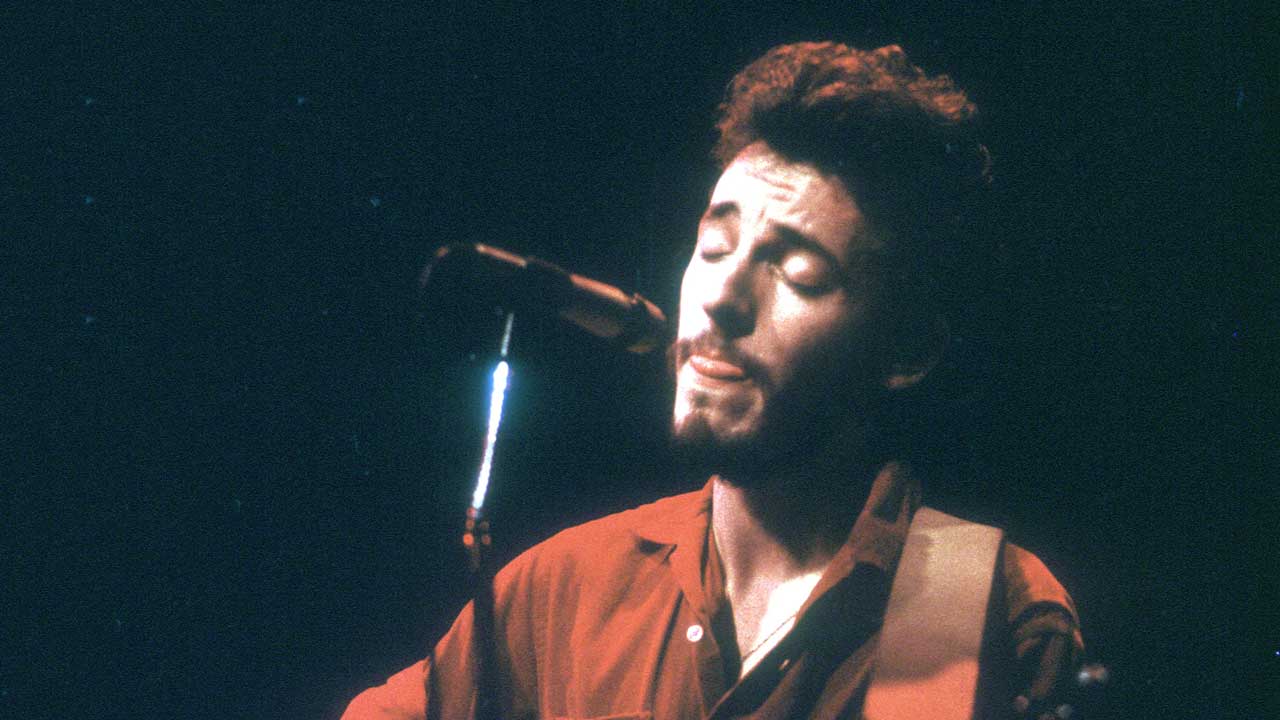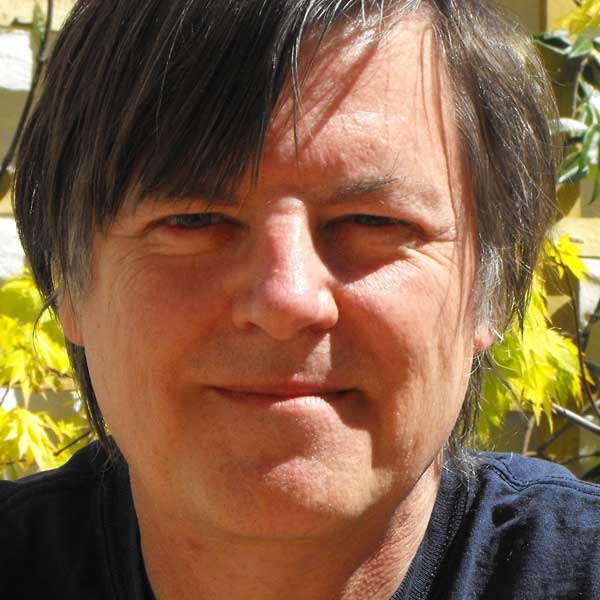It’s unthinkable now, but in early 1974 Bruce Springsteen was on the ropes. Despite favourable reviews, his first two albums had sold badly and his label, CBS, were unconvinced that he had a future with them. With his career in the balance, Springsteen was aware he had to make his mark, but he didn’t know how. He’d already recorded an epic new song, Born To Run, but the label weren’t just ignoring it, they were distancing themselves from it entirely.
Everything changed on May 9, 1974, when Springsteen supported Bonnie Raitt at the Harvard Square Theater in Cambridge, Massachusetts. Watched by Rolling Stone writer Jon Landau, the singer pulled off the most important gig of his career – and one of the most legendary shows in the annals of rock history. It wasn’t just the night Bruce Springsteen saved his career – it was the night he became a star.

Mike Appel (Springsteen’s then-manager): CBS were thinking of dropping Bruce. The vice president, Charles Koppelman, was touting Billy Joel. He couldn’t care less about Bruce. Bruce had spent a lot of that summer recording Born To Run, but Columbia weren’t interested in releasing it, or letting us record any other tracks for the album.
Bruce Springsteen: I’m a pain in the ass to them. They want to make somebody else famous. What it is, is different musical policies. They want to stick their fingers in my pie. I don’t need it. I do mine, let me alone. Just let me make my music.
Barry Schneier (photographer): I first saw Springsteen during a run of four gigs in April ’74 at a club called Charlie’s Place, which was also where he met Jon Landau.
Jon Landau (journalist): I went to this club, and it was completely empty. He had the smallest of cult followings. Before the show, I asked the guys in the bar where Bruce was, and they pointed outside.
Barry Schneier: The club had posted up a copy of Jon Landau’s review of [Springsteen’s second album] The Wild, The Innocent And The E Street Shuffle, and Bruce was outside reading it.
Jon Landau: I stood next to him and said: “What do you think?” And he said: “This guy is usually pretty good, but I’ve seen better.” I introduced myself, and we had a laugh.
Barry Schneier: At Charlie’s, I remember thinking that I had never heard music like that before. It was such a fresh, fantastic sound. Literally the day after, I called Ira Gold, a local promoter, and said: “You have got to put this guy on somewhere.” My motive was purely personal – I wanted to see him play again. About a month after I called him, Ira put him on a support slot with Bonnie Raitt at the Harvard Square Theater.
Russell Gersten (journalist): Myself and Jon Landau were both writing for a local rock publication called The Real Paper. We knew the Harvard Square Theatre well. It was an old cinema that had seen better times.
Barry Schneier: As far as I know, this was only the second rock concert ever held there. Van Morrison was the first. It had a small stage, small balcony, over-stuffed chairs, a bit of mildew. If you were standing in the wings shooting there wasn’t much space behind me.
Russell Gersten: Strangely, although Jon was a much bigger rock fan than me I actually met Springsteen before him. I was at CBS in New York in 1972 interviewing the A&R man John Hammond, and this guy walked into John’s office barefoot. John introduced him as Bruce Springsteen. I became familiar with his first albums, but I wasn’t as impressed by him as Jon was.
Mike Appel: At that time, Bonnie Raitt was very big in the North East and in Boston in particular, so it was a great gig for Bruce to get.
Barry Schneier: During sound-check on the afternoon of the Harvard Square gig, he had this intensity that I had not seen in any other act. He was directing them, in the way an orchestra leader would lead his musicians. He would make them repeat riffs over and again. I remember him pointing at Clarence Clemons and saying: “Do that again. One, two, three, four…” There was a seriousness that I’d never seen before. It was clear why the band was so tight. They would all stop and pay a hundred per cent attention to him.
David Sancious (keyboards, E Street Band): Sometimes you get a bunch of accomplished players together and it sounds stale, but with us it was like every note was tight in place, but with heart. That band was a real good thing for Bruce, because he was writing things at that time beyond the scope of normal rhythmic things.
Barry Schneier: It felt like he knew that this could be an important night for him. I didn’t realise then, of course, that he already knew Jon Landau would be at the show.
Mike Appel: There was an unpredictability about what Bruce was going to play on any particular night. That’s just the way he is. But he played great that night.
Barry Schneier: Although he was a rock act, he opened the show with New York City Serenade, which starts with a kind of classical piano intro, and yet he completely grabbed the crowd’s attention. It was such a beautiful song live.
Bruce Springsteen: People feel they know you when you do something like that. It relaxes the crowd. They realise that the evening isn’t going to rush by, you know, forty minutes on and off.
Jon Landau (writing in Boston newspaper The Real Paper): Springsteen is a wonder to look at. Skinny, dressed like a reject from Sha Na Na, he parades in front of his all-star rhythm band like a cross between Chuck Berry, early Bob Dylan and Marlon Brando. Every gesture, every syllable adds something to his ultimate goal – to liberate our spirit while he liberates his by baring his soul through his music.
Barry Schneier: At least fifty per cent of the audience had no idea who Bruce Springsteen was, but they were captivated by him. In between each song he would tell little stories, and the crowd got a big kick out of that. The promoter later told me that Bruce was only supposed to play a thirty-five minute set, but he just carried on. He took advantage of the moment.
Jon Landau: Springsteen does it all. He is a rock’n’roll punk, a Latin street poet, a ballet dancer, an actor, a joker, bar-band leader, hot-shit rhythm guitar player, extraordinary singer, and a truly great rock’n’roll composer. He leads a band like he has been doing it forever.
Barry Schneier: At the end of the set, when it looked like the band was leaving the stage, I put my camera down, and then I noticed the band members were all around me, they were not leaving. Then Springsteen sat down at the piano, about three feet from where I was, and started playing this slow song, which I gradually realised was a slow version of For You. I very quickly reloaded the camera and started shooting, so I got some lovely, totally unexpected solo shots.
Jon Landau: I saw my rock’n’roll past flash before my eyes. And I saw something else: I saw rock’n’roll future and its name is Bruce Springsteen. On a night when I needed to feel young, he made me feel like I was hearing music for the very first time.
Mike Appel: When Jon Landau’s review appeared, I capitalised on it immediately by sticking it under the noses of everybody at CBS Records.
Bruce Springsteen: I was just getting over the [New Bob] Dylan thing, and I’m sitting home thinking: “Thank God people seem to be letting that lie go”, and phwoooeee! “I have seen…” No! It can’t be.
Mike Appel: I still couldn’t get any commitment from CBS about Born To Run. Then I thought, what if I was to do something really unheard of? I decided to make about forty copies from the master of Born To Run, and give it to the top forty or so FM stations in the United States and let them play it. I knew the label would go bonkers, but it seemed like maybe the only chance we had.
So I sent it out to all these DJs and they all started playing it. Kids were running into the stores asking for it, thinking there’s an album they can buy, but there’s only a single and they couldn’t buy it. The store owners get frustrated, they call the promotion men at CBS, and before long they can’t wait to get their hands around my neck. They were furious because I had released a record to radio before it was in the stores.
Bruce Springsteen: I wanted Born To Run to be a hit single. Not for the bucks, but because I believed in the song a whole lot and I just wanted to hear it on the radio, you know? On AM across the country.
Mike Appel: Columbia ended up using Jon’s ‘Rock’n’roll future’ quote in their ads. We were happy with that.
Bruce Springsteen: All of a sudden the tide turned. It went over the hump where it became too much to ignore any more. And things started to come around, and I started the new album.
Mike Appel: Two-and-a-half years later, of course, Jon Landau got on board with Bruce as his new producer and manager. There was a period when things were not good between us. All of us took a whooping from the litigation that came out of that. I try to see it as one of life’s experiences – but not one that I’d ever want to do again.
Bruce Springsteen: That quote was a mite burdensome for me. But as Jon often said: “That’s your job.”
Photographer Barry Schneier's new book The Song Is Still Being Written: The Folk Music Portrait Project, which includes photos from Springsteen's Harvard show, is available to pre-order now.


